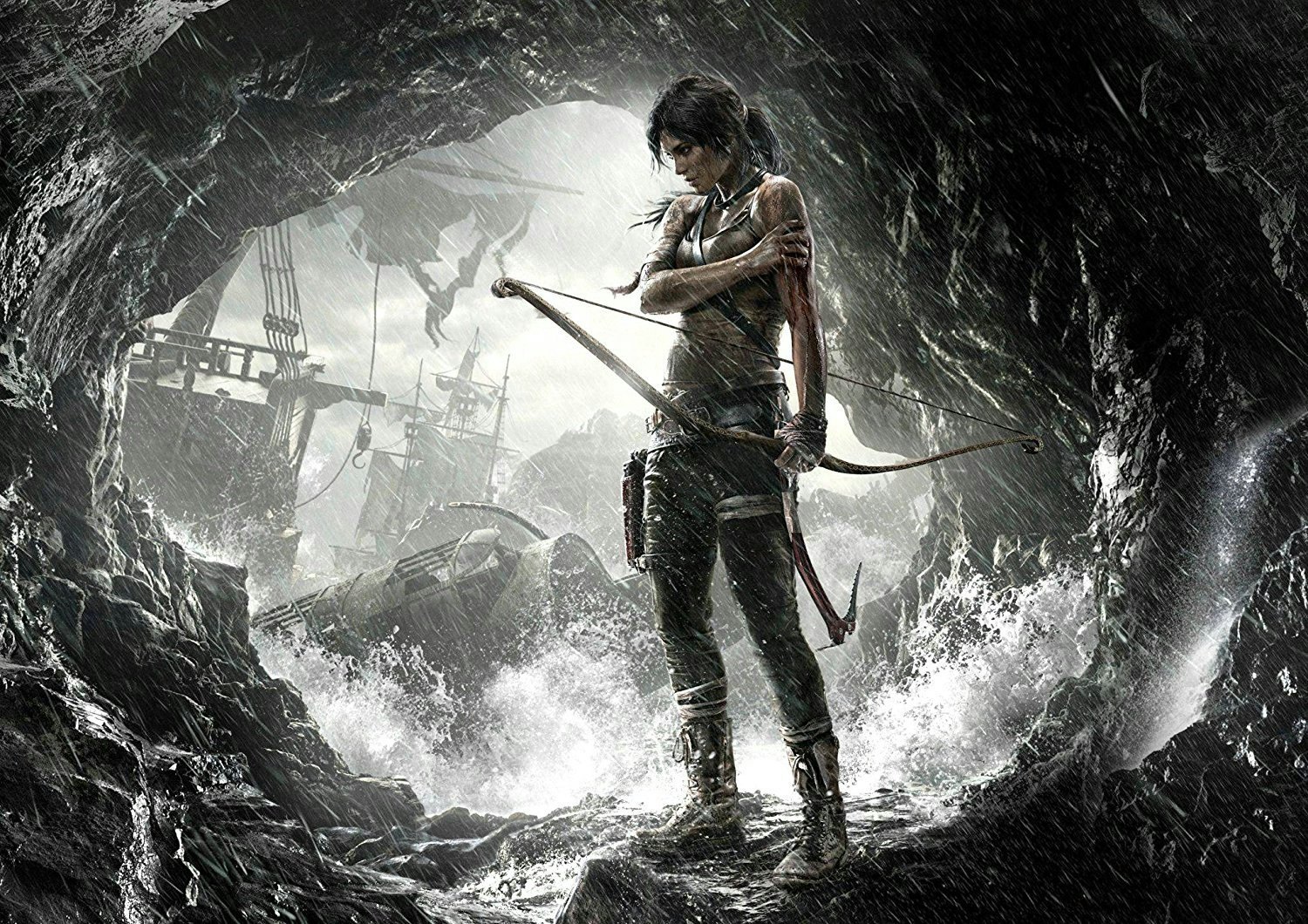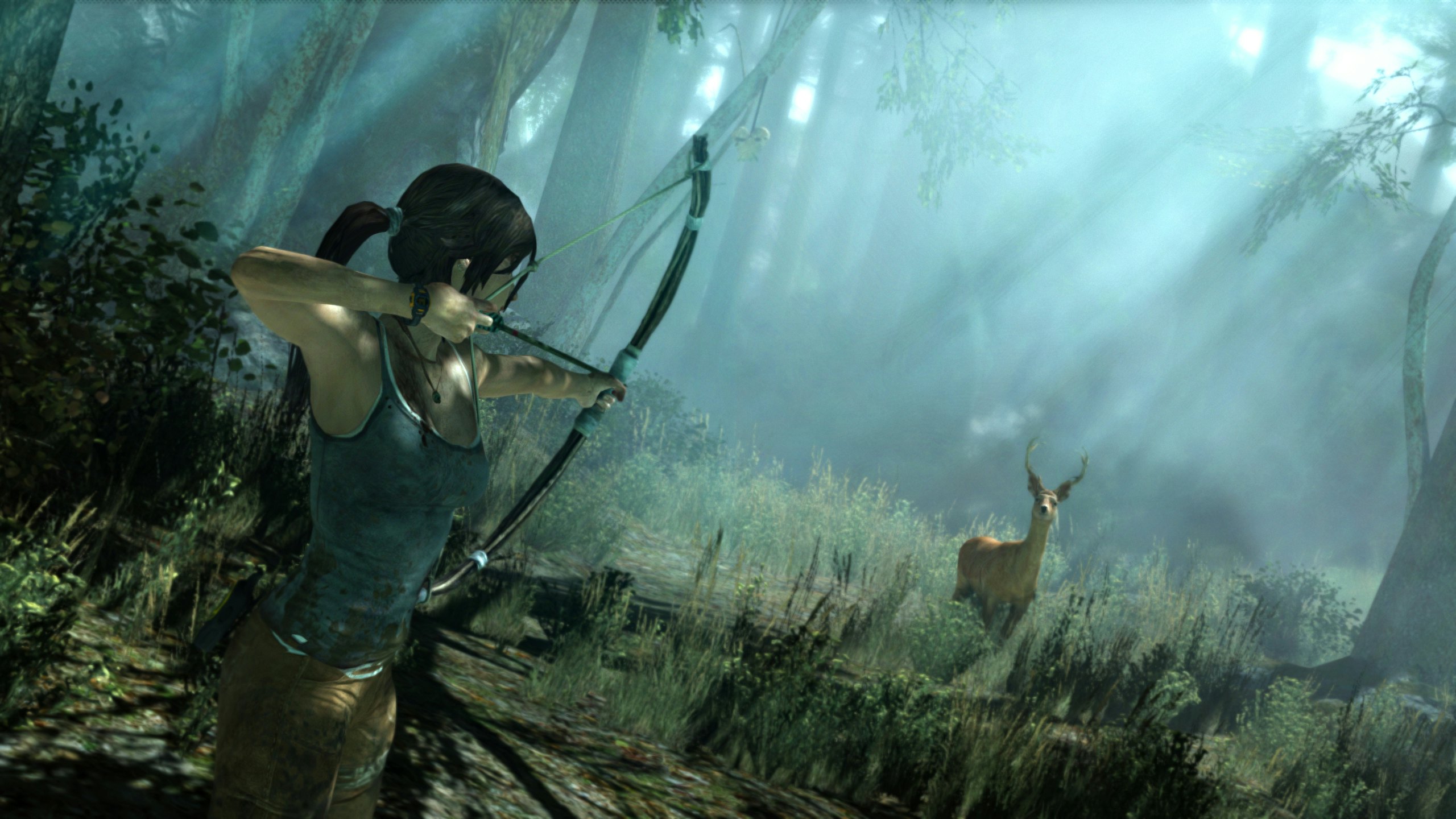
Few video game characters have stuck around in the public imagination as long as Lara Croft. Audiences were first introduced to her in 1996’s Tomb Raider, but by the 2010s, Lara was at risk of fading into the past. That all changed in 2013 when the developers at Crystal Dynamics released a reboot of the franchise simply titled Tomb Raider, which marked the beginning of a new golden age for the series.
The marketing slogan for Tomb Raider (2013) was “A Survivor is Born.” Visuals of an abandoned island littered with shipwrecks signaled that this origin story would set the franchise on a grittier, more daring trajectory. Releasing months before the launch of PlayStation 4 and Xbox One, Tomb Raider sought to make Lara Croft at home in a generation defined by moody action-adventure fare like Gears of Wâr and The Last of Us.
But the biggest shadow looming over Lara’s head was Uncharted. With three hit games during the PlayStation 3 era, Naughty Dog’s reputation hit the stratosphere thanks to the globe-trotting exploits of Nathan Drake.
Uncharted openly took plenty of inspiration from Tomb Raider and Indiana Jones. Series creator Amy Henning left Crystal Dynamics to work at Naughty Dog because Crystal Dynamics denied her request to work on a new Tomb Raider project. Uncharted took the treasure-hunter formula and updated it for modern audiences with cover-based gunplay and stunning set pieces.
So how could Tomb Raider compete with its replacement? Change the game altogether.
Rather than focusing on gymnastic exploration and fantastical plotlines with dinosaurs and Atlantis, Tomb Raider (2013) is a down-to-earth survivalist story. This Lara is resourceful, resilient, and fighting for her life, trapped on a remote island off the coast of Japan.

The game introduced mechanics like crafting, hunting animals for resources, and backtracking to old campsites on the island. The island acted as a semi-open world that the player could explore outside of the main story in hopes of finding tombs, which in this reboot are massive puzzle-platformer setpieces that act as an homage to games of old.
Moment-to-moment gameplay includes third-person shooter combat with more freedom to navigate encounters in different ways. Lara can be non-lethal, a stealth threat with her bow, or an all-out offensive monster. The narrative of Lara’s growth on the island is a gripping, adrenaline-pumping story that culminates in a hugely satisfying finale.
Once again, Lara Croft had arrived.
The game drew widespread critical praise and became the fastest-selling game in the franchise at the time. Tomb Raider (2013) would be the beginning of a new trilogy for Lara, continuing with Rise (2015) and Shadow of the Tomb Raider (2018).
Since the close of her reboot trilogy, Lara Croft has once again been dormant. But Crystal Dynamics is hard at work on a sequel that may just reinvent Tomb Raider for the next decade. After all, they already did it once.







